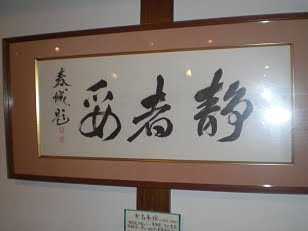For the last five years, his company has been targeting the international market. Also, as chairman of both the Japan Sake Brewers Association Junior Council and Niigata Sake Brewers Association, he has been pushing other breweries to expand their reach outside Japan.
According to him, the trendiest venues in New York City for young couples to get together are Japanese restaurants and sushi bars and many people have been turned on to the joys of drinking sake. He also said that there has been a noticeable increase in the number of scenes in movies and TV shows that show people drinking sake.
“In Tokyo, Japanese couples may visit Italian or French restaurants to enjoy drinking wine, but in New York City, Japanese cuisine has been trendy for about 10 to 15 years,” he said. “My company is now exporting 11 different kinds of sake to overseas markets.”
Kenji is particularly interested in expanding into the American market and he visits there quite often. When he does, he displays his brands at events and trade shows and tries to meet as many people as possible who might be interested in his brews.
One thing that he told me about the American market that I found interesting was that rather sweet sakes with only 10-percent alcohol content are very popular. I, like most Japanese, am not a big fan of sweet sakes. The style I prefer is “tanrei karakuchi,” which is light, crisp and dry.
Kenji found this interesting as well. He told me that Americans who really know sake usually prefer the drier brands with higher alcohol content.
Regardless of your preference, my friend may have the sake that fits your taste. So, if you are visiting the Niigata area, stop on by as his company allows visitors to watch the sake-making process.
He also maintains a small museum about the history of the company and the Ichishima family. In it, you can see many historical and valuable items, including calligraphy by Aizu Yaichi and Ichishima Shunjo.
If you get a chance, please visit his website: http://www.ichishima.jp/eng/









